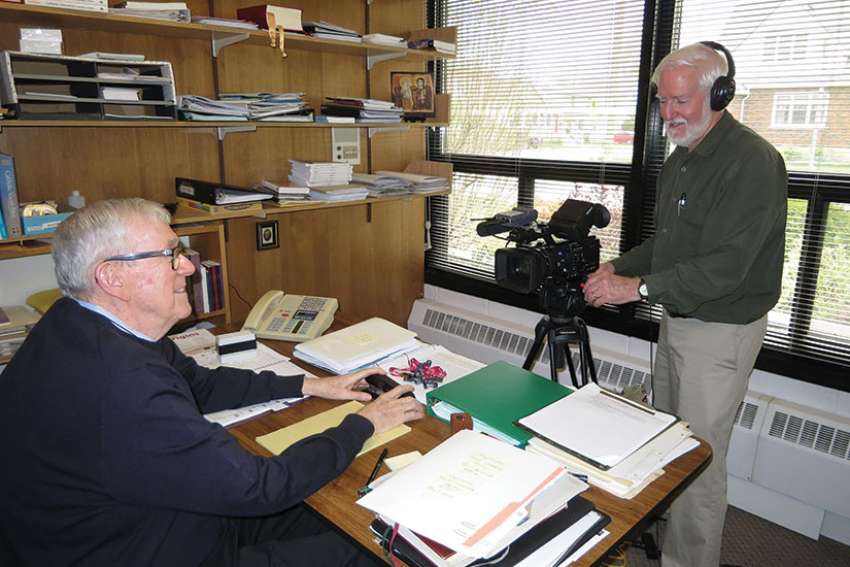“The purpose of the film is to get a sense of the legacy of the contributions over a period of time to Catholic education that religious communities had made,” said Kevin Moynihan, the man behind the camera and a former teacher. “The film is really kind of an orientation film for teachers. The people that are entering the system now as young teachers ought to know what went before them because they would appreciate the sacrifice that was made in order to have a fully funded Catholic school system.”
Moynihan, a 70-year-old Halifax- based filmmaker, and his assistant travelled around Ontario in May interviewing members of religious orders who contributed to the creation of the province’s two Catholic school systems, which today has 37 boards and more than 600,000 students.
“We started in eastern Ontario and then went to the north, came down to central and then southwestern Ontario,” said the 45-year veteran of the film industry who has produced work for the Jesuits, Redemptorists and the Canadian Conference of Catholic Bishops. “We put about 7,000 km on the car in a couple of weeks.”
During the month of interviews, Moynihan created a list of about 75 religious communities which played a direct role in establishing Catholic schools, both French and English, in Ontario.
“I would say that we probably have a dozen examples (from communities) and they are going to have to stand for the rest,” he said. “I’ve interviewed people of those communities and asked them about what they think their legacy is and what young teachers ought to know about whose shoulders they are standing on. Something I’m exploring is their particular interest as a community.”
Moynihan pointed to the French orders which, he said, “basically protected the French language and culture in Ontario.”
“Without Catholic education by French orders they wouldn’t be in the situation that they are today where they have their language and their culture protected,” he said.
“That’s a direct result of French teaching orders starting and maintaining them at their own expense until there was complete public support. ”
The history of formal Catholic education in Ontario began in 1841, when Catholics were given the right to manage their own schools. The Scott Act of 1863 reinforced those rights and opened access to public funding.
Moynihan is familiar with his subject, having spent more than two decades as a Catholic teacher both in a Montreal high school and Halifax’s Atlantic School of Theology, an ecumenical college which catered to Catholics, Anglicans and the United Church.
“There is some satisfaction. I’m delighted to be working with religious communities,” he said. “I’m committed to telling the stories of religious communities who themselves are reluctant to sort of blow their own horns. I admire these people.”
The Catholic Education Foundation of Ontario, which commissioned Moynihan’s KM Productions company, is seeking to protect the history of religious orders.
“Certain generations no longer have first-hand experience with these religious communities,” said Don Walker, executive director of the Foundation. “What we wanted to do was commemorate the contribution of especially the religious communities.”
Walker said that while much of the history of Ontario’s separate school system can be found within textbooks, there has been very little documentation of the often extraordinary efforts of the religious orders to keep Catholic schools alive.
“For the first years, at least the first 100 years, without the religious communities Catholic schools would have really struggled,” he said.
Often, their stories are ones of sacrifice, said Moynihan.
“Many congregations came around the time of Confederation and they started building small Catholic schools associated with parishes,” he said. “They taught in them for basically not very much money in terms of salaries but because they were religious communities they pooled their resources to survive.”
When inner-community crowd funding didn’t cover the cost, many of the religious community members took on secondary jobs within the broader communities.
Things didn’t get much easier for the religious teachers until 1984 when the provincial government decided to provide full-funding for Ontario Catholic schools.
“One sister, who was 85, told me in the interview that she had a small school in the early ‘60s with four rooms and eight grades,” said Moynihan. “She had no principal so she was the administrator and the teacher. Her salary was $200 a month.”
Moynihan hopes to complete editing the film over the summer.


